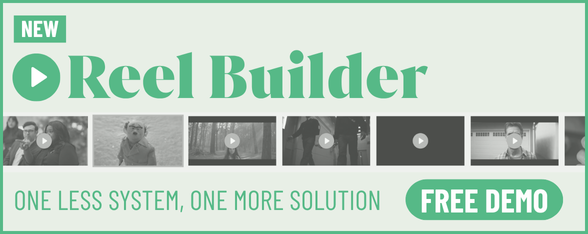
How a ‘Blind Date’ Led To Saatchi & Saatchi NZ’s Creative Match

When Saatchi & Saatchi New Zealand CEO Mark Cochran pitched Lee Sunter and Jordan Sky to each other, they had no idea whether they’d be a match made in heaven, or a bad date. Now joint executive creative directors, the pair still think of their first encounter as something of a corporate Tinder swipe.
“It was a blind date in a lot of ways,” Jordan explained to LBB.
“We’d both previously worked with [now Saatchi & Saatchi New Zealand CEO] Mark Cochran. When he was back in New Zealand and I was working with him, we spoke about what the department was lacking or needed. He jumped straight to Lee, thinking he would be a great fit.”
When Lee joined Saatchi&Saatchi New Zealand from the network’s Australian office, there was no certainty the pairing would necessarily produce results. Hailing from different parts of the world, their journeys to Saatchi & Saatchi both involved change, compromise, and a burning creative passion.
Lee, who started out as a creative at DDB in London, had always been drawn to ads.
“The early 2000s was a great time for ads, and especially in British culture,” Lee says.
“It was Tango, it was PlayStation, it was Guinness; it was stuff that has stood the test of time. It was the ads people used to talk about in pubs when I was underage drinking, or at barbecues, or other family dinners. The scene was really interesting.
“Advertising, at one point in time, was one-off jokes that stuck with you. But at that time, it was brands and soft agencies. I grew up in the north of England, so agencies were few and far between, quite small and very regional -- it was all out of London, so I knew I had to go.”
After spending some time studying, Lee worked in supermarkets and in various placement roles for over a year before landing at DBB.
“The great thing was they allowed you to work on briefs that the best teams in the agency were on. There was no hierarchy of such. You could have a crack. And if you cracked it, then you went to the top.”
Jordan was less drawn to advertising itself and more to ideas.
“As a kid, I remember thinking I was going to be an inventor,” Jordan explains.
“Then I realised I loved making stuff that people talked about … As I got older, the stuff people wanted to talk about was ads. I remember being with my friends and having a camcorder and just filming what we thought were fun skits because we thought we were good enough to be on Saturday Night Live.”
After a bachelor's in psychology and a postgraduate diploma in media copywriting, Jordan felt he “didn’t have any other skills”.
“I couldn't draw, but I thought, ‘how hard is it to put pen to paper?’ Incredibly hard. But in my first role as creative, the creative directors said, ‘Oh, we really like how you work with one of the other writers. How do you feel about doing some art direction as well? Everybody's a creative these days; you can art direct.’
“I was just self-taught at that point, and it was a trial by fire. I was desperate to write. I wanted to do what I knew was my thing.”
When they teamed up at Saatchi & Saatchi New Zealand, Lee hadn’t worked with a formal creative partner for nearly five years.
“I think you always have partners across the business,” Lee says. “Whether it's your EP or your strategy director, you need those great jewels all across the business.
“We’re from opposite sides of the world, but we have this similar liking for similar work, the slightly funny, irreverent kind. When the teams were too busy to take work on, we got stuck in and got on it.”
The pair agree that when they met, their aligned personal values -- ethical, creative, and cultural -- drew them together immediately.
“There was no awkwardness,” Lee says. “I felt there was no ego. I didn’t feel I had to prove that I'm better than this person.”
Jordan also recalls their relationship “never felt competitive”, and they just wanted to see the agency flourish. In the end, their differences have made their work thrive.
“Yes, diverse experiences, both from different places, [but] we do have similar views,” he says.
“We definitely have complementary strengths, and that's probably what makes it work between us, but we don't always approach things the same way.
“Lee really loves crafting and sharpening an idea. It's one of those disciplines that we all know and talk about, which makes the work better. Lee puts it into practice constantly. I like to sit in the weeds a little bit longer, try a lot of permutations, check to see if the shape of the narrative or idea still makes sense to the original thought.”
While Lee admits he tends to be “led by his gut”, his vision for the agency is clear and direct: ambition. For Lee and Jordan, the future of Saatchi & Saatchi New Zealand is about deliberately and bravely raising the standard of work to be worthy of the Saatchi name.
“I think it's about work that lives beyond the industry,” Lee says.
“It's bigger than the industry. There are lots of awards to win … [but] it's about being talked about by real people. People at the dinner table and over barbecues, saying ‘did you see this thing? It was funny, or it was entertaining’.
“Saatchi has a history of that kind of work. It has a name that parents know about. Its history is known beyond advertising.”
The pedigree of creatives and advertising professionals who have come through the agency is also a point of pride, Jordan says.
“It’s also the people who work here who are talked about. A good example of success for an agency is having people try to steal your people because they're doing great things. It's the best compliment in the world to the environment you’ve fostered when your people start getting pinched. You know you’re doing something right.”
It is Lee and Jordan’s aspiration to live up to the Saatchi name.
“It’s a famous name,” Jordan says. “We talk about doing work that's worthy of the name. You want everything, whether it's the ideas, the environment, or the agency that we grow, to be worthy of the name Saatchi & Saatchi. It has deep roots and a lot of people built their careers here. Making sure we're doing work that's worthy is a great benchmark.”















